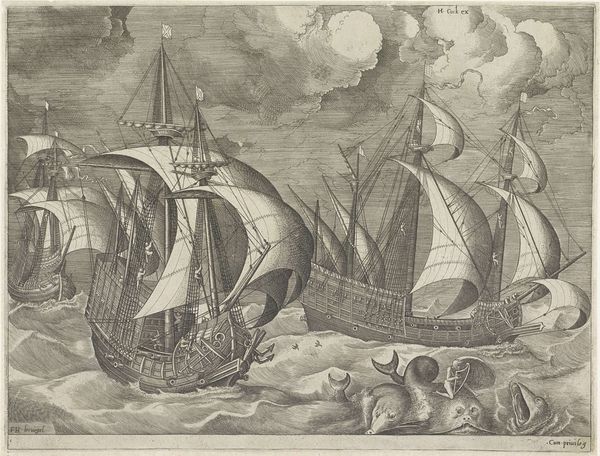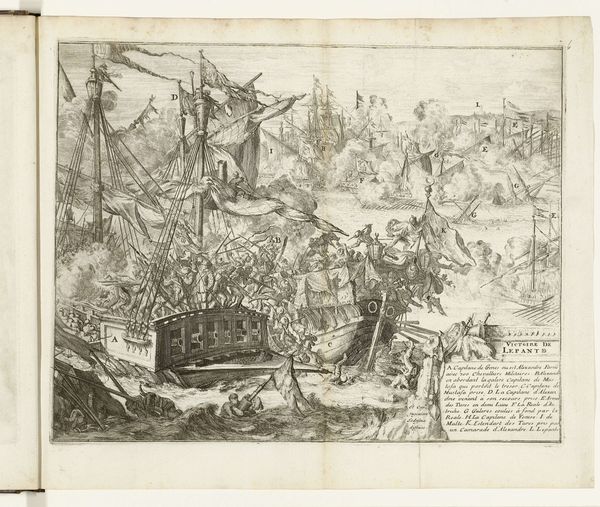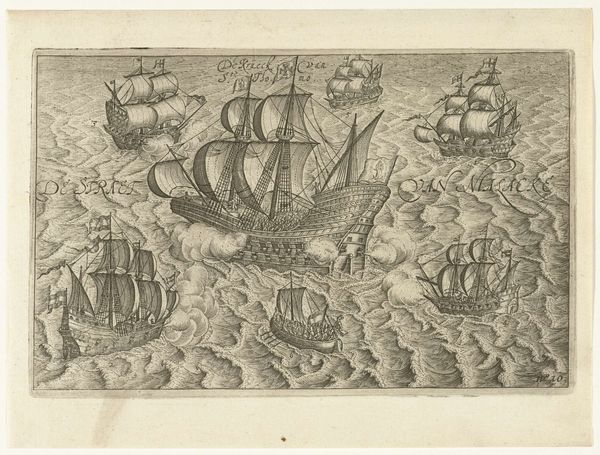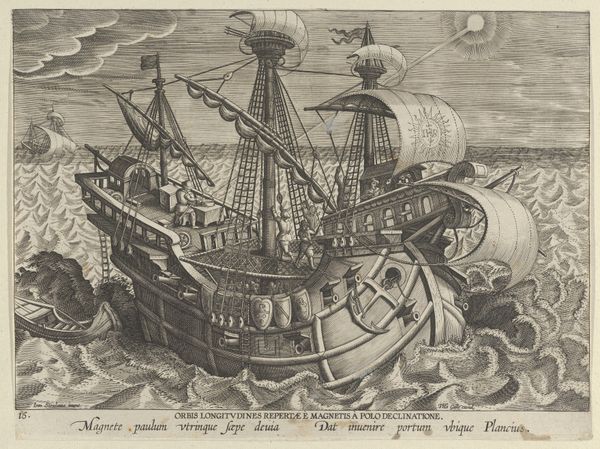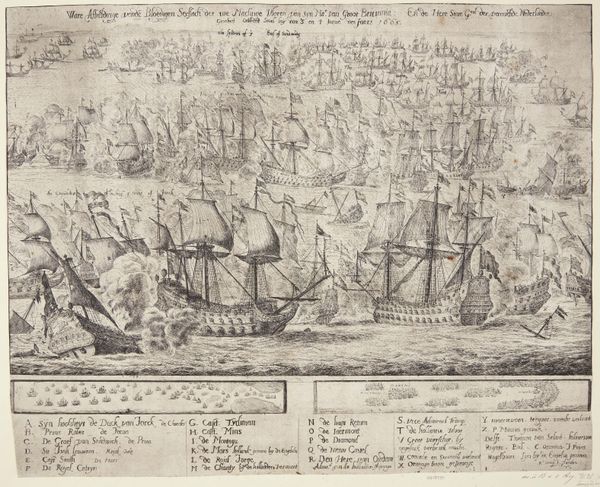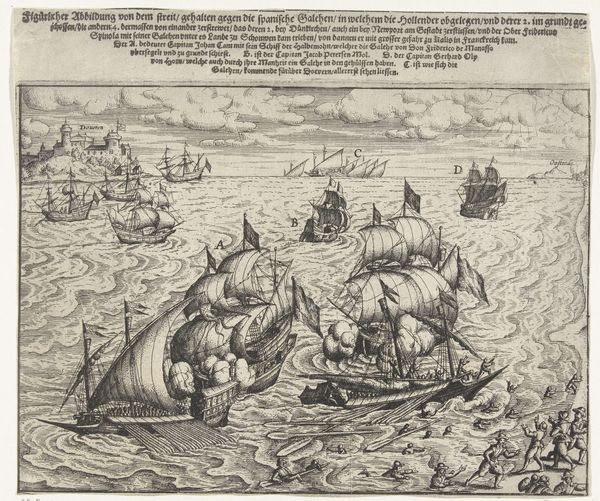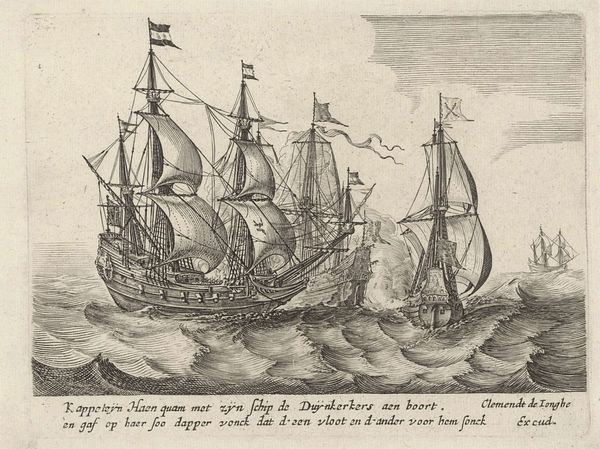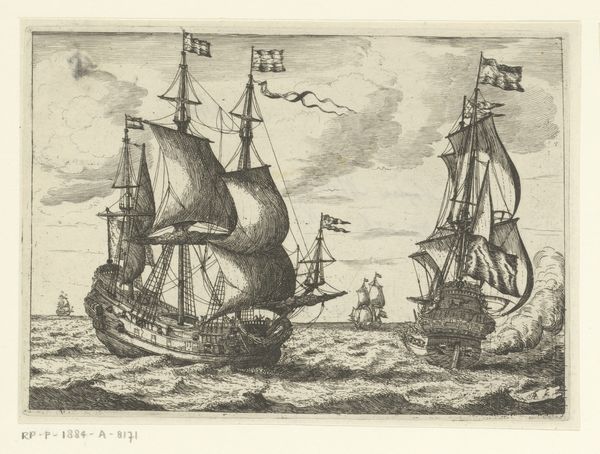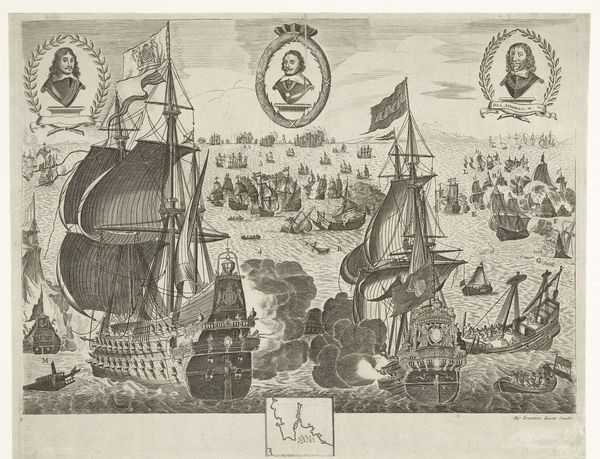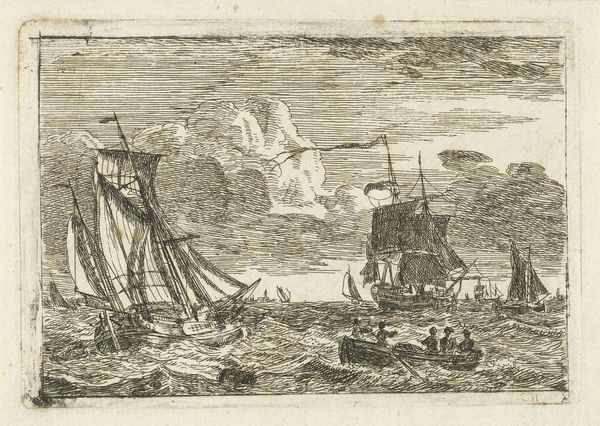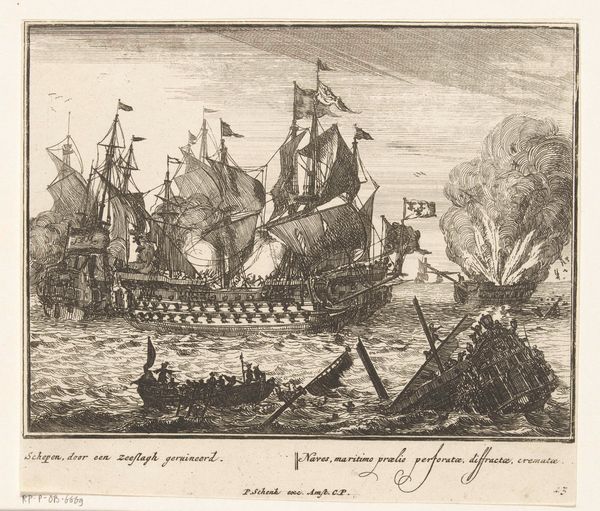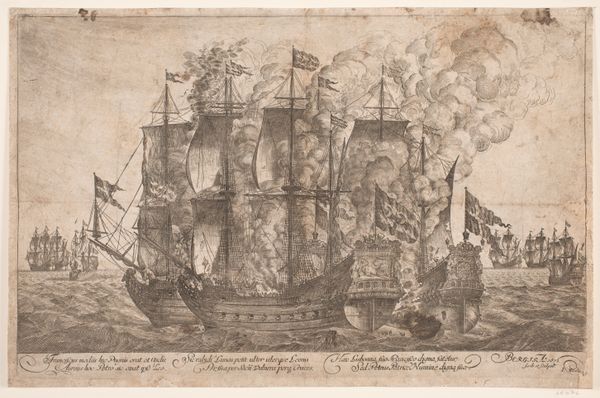
print, engraving
#
dutch-golden-age
# print
#
landscape
#
geometric
#
history-painting
#
engraving
Dimensions: height 293 mm, width 353 mm
Copyright: Rijks Museum: Open Domain
Editor: Here we have "The Land Sailer" of Simon Stevin, an engraving dating to the early 17th century, and currently housed in the Rijksmuseum. I find the composition quite fascinating – it’s a ship, but on wheels! It has a surreal quality, as if taken from a fantastical tale. What do you see in this piece? Curator: Initially, one might appreciate the artist’s effective use of line. Observe how the varying densities create tonal contrast, differentiating the sky, the land, and the vessel itself. Note the careful delineation of textures—the smooth sails, the intricately decorated carriage. Do you observe a certain balance or tension in the spatial organization? Editor: Yes, the ship commands the majority of the space, but the human figures add another layer and contrast. What about the use of patterns? Curator: Indeed, pattern is intrinsic to its design: repeated curves echo from wheels, wave crests to cloud formations, establishing an intriguing visual echo. We might even decode it structurally—examining how various components like geometric hull or the organic shapes contribute meaning to the engraving's overall effect. Do the patterns reinforce Stevin’s construction's underlying concepts of movement and balance? Editor: Now that you point that out, the repetition highlights movement despite it being still, captured in a print. I hadn't thought of looking for how the elements reflect one another. Curator: Analyzing prints of the Dutch Golden Age provides significant insight into the period's obsession with invention and progress. And by focusing on this image's formal devices like patterns, tone, or geometric structures we get another avenue into interpreting the intentions behind Stevin's Zeilwagen beyond its face value alone.
Comments
No comments
Be the first to comment and join the conversation on the ultimate creative platform.
